“From out to in, from here to there – books can take you anywhere”
Edwards, CO –Calling all explorers! What if you could go anywhere in the world? Through the power of imagination, and the art of the written word, each of us can pick up a book and set sail to a magical destination. Fostering curiosity and literary appreciation is at the heart of Nicole Magistro’s whimsical picture book “Read Island” (Read Island LLC, October 5, 2021).
Join a very brave girl and her animal friends as they traverse the seas in search of an island made of books. Propelled by their sense of wonder, the group makes exciting discoveries, meets unique new animal friends, and learns the most important secret of Read Island – “This world of stories, safe and true, is always here to welcome you.”
Equal parts a celebration of reading and a valuable lesson in environmental stewardship, this tale is the perfect addition to a little explorer’s growing bookshelf.
“Read Island”
Nicole Magistro | October 5, 2021 | Read Island, LLC | Juvenile Fiction
Hardcover | ISBN: 9781736523308 | Price: $18.99
About the creators…
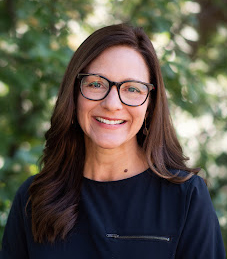
NICOLE MAGISTRO:
Nicole Magistro is a professional reader and amateur mother who lives in the mountains of Colorado. She owned a bookstore for 15 years, wrote thousands of book reviews and memorized a few too many bedtime stories. Her favorite place in the world is the real Read Island, which inspired this story.
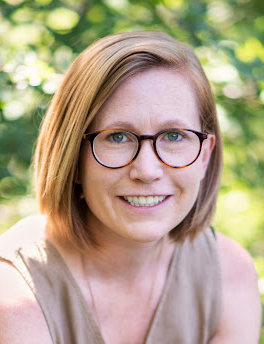
ALICE FEAGAN:
Alice Feagan grew up in a small town but has traveled the world many times over through the pages of her favorite books. This love of stories (and a mild obsession with art) inspired a career in illustration. Today, she is a children’s book creator known for her distinct cut-paper collage style. When she is not writing or illustrating picture books Alice can be found hiking, creating, or reading with her two young sons. The Collectors was her authorial debut, and Read Island is the third book she has illustrated.
Follow the creators on social media:
Facebook: @myreadisland | Twitter: @nicolemagistro | Instagram: @myreadisland
In an interview, Nicole Magistro can discuss:
- What inspired her to write this book, including the story of the real Read Island, one of the Discovery Islands in British Columbia, Canada
- What it’s like on “the other side of the counter” as a former bookstore owner turned author
- How Alice Feagan’s collage illustrations can become a seek-and-find game for readers
- What message she hopes to impart to young readers
Praise for the book…
“A beautifully illustrated children’s poem about the joys of reading”
–Kirkus Reviews
“Who wouldn’t want to live on Read Island? Not every kiddo gets a chance to travel in real life, but they really go places with this charming picture book!”
–Anne Holman, co-owner, The King’s English Bookshop, Salt Lake City, UT
“A beautiful celebration of the adventure that is a story. A must-have addition to any picture book library”
–Megan Waterman, owner, The Book Nook, Canby, OR
“An instant classic”
–Wendy Hudson, owner, Nantucket Book Partners, Nantucket, MA
“This beautifully illustrated picture book expresses what all book lovers hold dear – books can take you anywhere. Magistro’s lyrical rhymes pair perfectly with Feagan’s timeless illustrations”
–Sarah Hopkins, bookseller, The Bookworm of Edwards, Edwards, CO
“Unite book-loving animals, high-seas adventure, and gorgeous, innovative illustrations and you arrive at Read Island… a beautiful vessel for parents and children to understand, discuss, and celebrate the magic of reading”
–Heather Mateus Sappenfield, author, The River Between Hearts
“A captivating and beautifully illustrated read-along that has all the makings of an instant classic… the perfect example of a picture book that will invite repeat visits long after readers have ‘aged out’ of the text.”
–IndieReader (5-star review)
“I want to go to Read Island! What a magical, lilting, sweet story”
–Nicole Sullivan, owner, Book Bar, Denver, CO
An Interview with Nicole Magistro
1. What inspired you to write this sweet story about an island made of books?
The real Read Island is our family’s favorite place to visit every summer. During the pandemic we couldn’t travel to Canada, except in our imaginations. Through meditation, my 9-year-old son and I “visited” as often as we could, and during one of these mental journeys, the symbolism of the place name became the story. It was a lightbulb moment – books can take you anywhere!
2. As a former bookstore owner, what is it like to be “on the other side of the counter” now that you’re an author?
Certainly I feel that indie booksellers are my tribe, and bookstores feel like home to me, but presenting a debut book to these professional readers is still nerve wracking! Booksellers have to make tough decisions in order to curate the perfect mix for their stores, and so I am eternally grateful every time a buyer takes a chance on my book. It means the world to me. And I get goosebumps every time I see Read Island on display “in the wild!”
3. Alice Feagan’s illustrations use a collage technique. Can you tell us more about the materials she used?
Alice is supremely talented with traditional and modern techniques. In the early versions, she hand drew each character and each scene to visually propel the story along. Then she selected a palette and textures to begin the digital work. And finally, she built layers using the text and images from classic children’s stories, fables, songs, and maps. This brought to life all of the thematic elements of the book. Alice uses textures from the natural world (and the literary one!) for colors, shadows and sources of light. Every step in her process was a surprise to me, and I continue to find little gifts on every page. You will, too!
4. While this book celebrates reading and promotes literacy, it also highlights the beauty of the natural world. Do you have an environmental message for kids as well?
A personal goal of mine is to have a strong mind-body connection with the Earth. I possessed this wholeness as a child, yet I somehow managed to un-learn or separate myself from nature along the way. I’ve learned that the binary of inside and outside doesn’t really have to exist! This story represents how our mindful, human adventures can exist in harmony with the wonders of wild places. But of course, it’s a message for kids so, simply, I want to help the littlest readers maintain that connection to nature and our physical world.
5. Are you available for events with bookstores, libraries, or schools?
Absolutely! Alice and Nicole love connecting with readers, talking about books and getting new recommendations for things to read ourselves! Check the website for upcoming events near you, or reach out to us about hosting an event at your bookstore, school, library or community center!

A former award-winning journalist with national exposure, Marissa now oversees the day-to-day operation of the Books Forward author branding and book marketing firm, along with our indie publishing support sister company Books Fluent.
Born and bred in Louisiana, currently living in New Orleans, she has lived and developed a strong base for our company and authors in Chicago and Nashville. Her journalism work has appeared in USA Today, National Geographic and other major publications. She is now interviewed by media on best practices for book marketing.

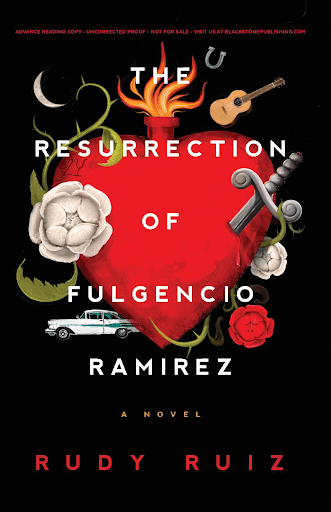 San Antonio, Texas – This fall, author Rudy Ruiz — recipient of six International Latino Book Awards — will release his latest book, “The Resurrection of Fulgencio Ramirez” in paperback. Since its September 2020 release in hardcover, “The Resurrection of Fulgencio Ramirez” has been named a finalist for the International Latino Book Awards in the fiction and audiobook categories. An authentic bilingual writer of Latino literature, Ruiz shares stories with universal human appeal in the hopes of bridging cultural divides through mutual acceptance and appreciation.
San Antonio, Texas – This fall, author Rudy Ruiz — recipient of six International Latino Book Awards — will release his latest book, “The Resurrection of Fulgencio Ramirez” in paperback. Since its September 2020 release in hardcover, “The Resurrection of Fulgencio Ramirez” has been named a finalist for the International Latino Book Awards in the fiction and audiobook categories. An authentic bilingual writer of Latino literature, Ruiz shares stories with universal human appeal in the hopes of bridging cultural divides through mutual acceptance and appreciation.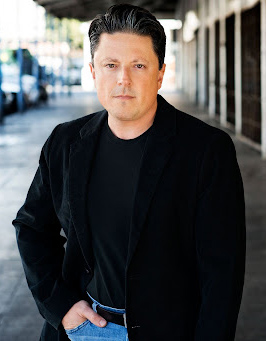 Rudy Ruiz is a writer of literary fiction. A native of the U.S.-Mexico border, his earliest works were published at Harvard, where he studied literature, creative writing, government and public policy, earning bachelor’s and master’s degrees. “Seven for the Revolution” was Ruiz’s fiction debut. The collection of short stories won four International Latino Book Awards. Ruiz’s short fiction has appeared in literary journals including BorderSenses, The Ninth Letter, New Texas, and the Notre Dame Review. In 2017, Rudy Ruiz was awarded the Gulf Coast Prize in Fiction. In 2020, Ruiz was a finalist for both the Texas Institute of Letters’ Best Short Story Award as well as the Texas Observer’s annual Short Story Contest.
Rudy Ruiz is a writer of literary fiction. A native of the U.S.-Mexico border, his earliest works were published at Harvard, where he studied literature, creative writing, government and public policy, earning bachelor’s and master’s degrees. “Seven for the Revolution” was Ruiz’s fiction debut. The collection of short stories won four International Latino Book Awards. Ruiz’s short fiction has appeared in literary journals including BorderSenses, The Ninth Letter, New Texas, and the Notre Dame Review. In 2017, Rudy Ruiz was awarded the Gulf Coast Prize in Fiction. In 2020, Ruiz was a finalist for both the Texas Institute of Letters’ Best Short Story Award as well as the Texas Observer’s annual Short Story Contest.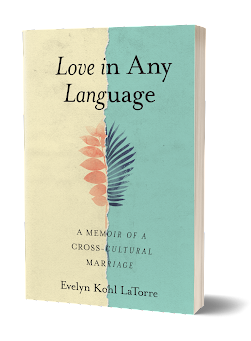 SAN FRANCISCO — Clear-eyed and frank, author Evelyn Kohl LaTorre’s stunning new memoir, “Love in Any Language,” (Sept. 28, 2021, She Writes Press) beautifully illustrates the trials and joys in the blending of two cultures.
SAN FRANCISCO — Clear-eyed and frank, author Evelyn Kohl LaTorre’s stunning new memoir, “Love in Any Language,” (Sept. 28, 2021, She Writes Press) beautifully illustrates the trials and joys in the blending of two cultures.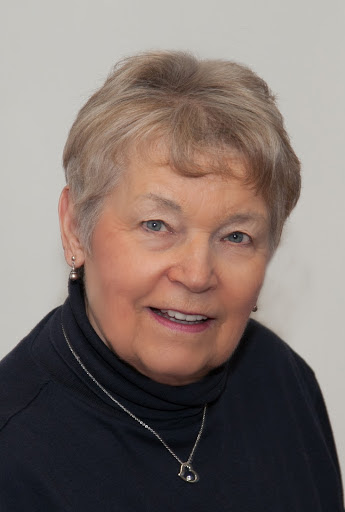 EVELYN KOHL LaTORRE grew up in rural Southeastern Montana, surrounded by sheep and cattle ranches, before coming to California with her family at age 16. She holds a doctorate in multicultural education from the University of San Francisco, and a master’s degree in social welfare from UC Berkeley. She worked as a bilingual school psychologist and school administrator in public education for 32 years. Evelyn loves to explore other lands and cultures. To date, she and her husband have lived in and traveled to close to 100 countries. You can view her stories and photos on her website,
EVELYN KOHL LaTORRE grew up in rural Southeastern Montana, surrounded by sheep and cattle ranches, before coming to California with her family at age 16. She holds a doctorate in multicultural education from the University of San Francisco, and a master’s degree in social welfare from UC Berkeley. She worked as a bilingual school psychologist and school administrator in public education for 32 years. Evelyn loves to explore other lands and cultures. To date, she and her husband have lived in and traveled to close to 100 countries. You can view her stories and photos on her website, 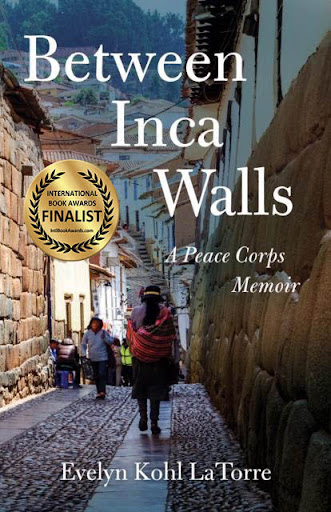 At 21, Evelyn is naïve about life and love. Raised in a small Montana town, she moves at age 16 with her devout Catholic family to California. There, she is drawn to the Latino culture when she works among the migrant workers. During the summer of her junior year in college, Evelyn travels to a small Mexican town to help set up a school and a library ― an experience that whets her appetite for a life full of both purpose and adventure.
At 21, Evelyn is naïve about life and love. Raised in a small Montana town, she moves at age 16 with her devout Catholic family to California. There, she is drawn to the Latino culture when she works among the migrant workers. During the summer of her junior year in college, Evelyn travels to a small Mexican town to help set up a school and a library ― an experience that whets her appetite for a life full of both purpose and adventure.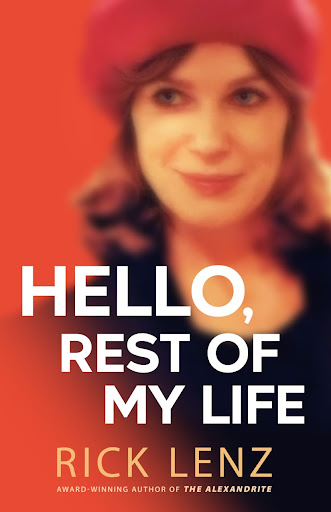 VALLEY GLEN, CA – If you could go back in time and pursue a successful career or a flourishing relationship, which would you choose? Award-winning author Rick Lenz has penned a dazzling novel about second chances and the choices that create a meaningful life, “Hello, Rest of My Life,” (Sept. 21, 2021, Chromodroid Press). This romantic journey through time is loosely based on the author’s real-life Hollywood career and love story with his wife and 40-year sweetheart, who changed his life with each encounter through the decades.
VALLEY GLEN, CA – If you could go back in time and pursue a successful career or a flourishing relationship, which would you choose? Award-winning author Rick Lenz has penned a dazzling novel about second chances and the choices that create a meaningful life, “Hello, Rest of My Life,” (Sept. 21, 2021, Chromodroid Press). This romantic journey through time is loosely based on the author’s real-life Hollywood career and love story with his wife and 40-year sweetheart, who changed his life with each encounter through the decades.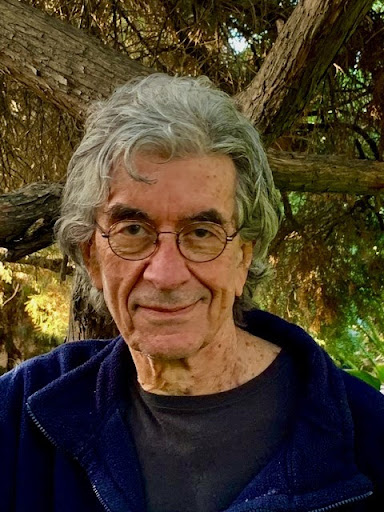 RICK LENZ: Rick Lenz is a graduate of the University of Michigan, past member of the Actor’s Studio, and active member in the Academy of Motion Picture Arts and Sciences. He is a veteran Broadway, television and film actor who first came to national attention when he repeated his Broadway role in Cactus Flower, in the film version—opposite Goldie Hawn, Ingrid Bergman and Walter Matthau. He went on to appear in a long list of television series and movies, and to act opposite many of the entertainment industry’s biggest stars—Peter Sellers, Jackie Gleason, Maureen O’Hara, John Wayne (in Wayne’s final film, The Shootist), and many more. He is also a playwright and author (The award-winning The Alexandrite and more recently, Impersonators Anonymous). His memoir, North of Hollywood has recently been published in its second edition. You can find out more about him and his journey to becoming a writer on his website
RICK LENZ: Rick Lenz is a graduate of the University of Michigan, past member of the Actor’s Studio, and active member in the Academy of Motion Picture Arts and Sciences. He is a veteran Broadway, television and film actor who first came to national attention when he repeated his Broadway role in Cactus Flower, in the film version—opposite Goldie Hawn, Ingrid Bergman and Walter Matthau. He went on to appear in a long list of television series and movies, and to act opposite many of the entertainment industry’s biggest stars—Peter Sellers, Jackie Gleason, Maureen O’Hara, John Wayne (in Wayne’s final film, The Shootist), and many more. He is also a playwright and author (The award-winning The Alexandrite and more recently, Impersonators Anonymous). His memoir, North of Hollywood has recently been published in its second edition. You can find out more about him and his journey to becoming a writer on his website 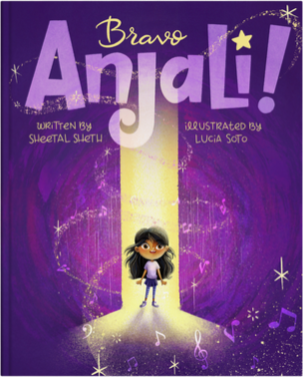 NEW YORK, NY – Sheetal Sheth returns with a new story for children everywhere featuring Anjali, the first South Asian hero in a children’s illustrated book series.
NEW YORK, NY – Sheetal Sheth returns with a new story for children everywhere featuring Anjali, the first South Asian hero in a children’s illustrated book series.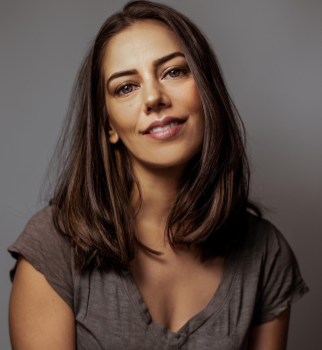 More about SHEETAL SHETH
More about SHEETAL SHETH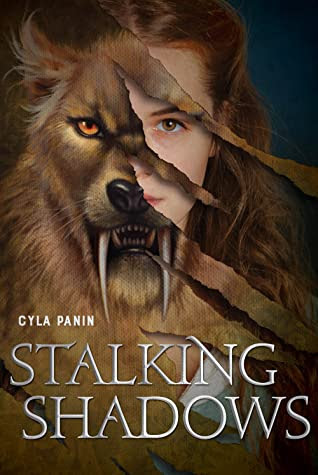 Calgary, Canada – Dark magic, fairy tale beasts, and deeply rooted secrets meet in this gothic fantasy from debut author, Cyla Panin. Stalking Shadows (Amulet/Abrams, Sept. 14, 2021) is a haunting gothic retelling of “Beauty and the Beast” exploring sibling loyalty as a young woman discovers the truth behind her sister’s curse.
Calgary, Canada – Dark magic, fairy tale beasts, and deeply rooted secrets meet in this gothic fantasy from debut author, Cyla Panin. Stalking Shadows (Amulet/Abrams, Sept. 14, 2021) is a haunting gothic retelling of “Beauty and the Beast” exploring sibling loyalty as a young woman discovers the truth behind her sister’s curse.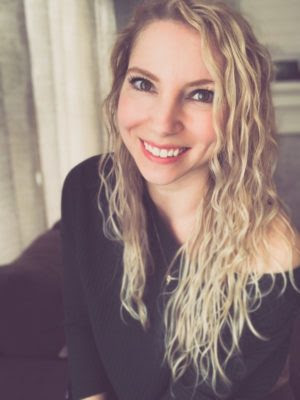 More about Cyla Panin
More about Cyla Panin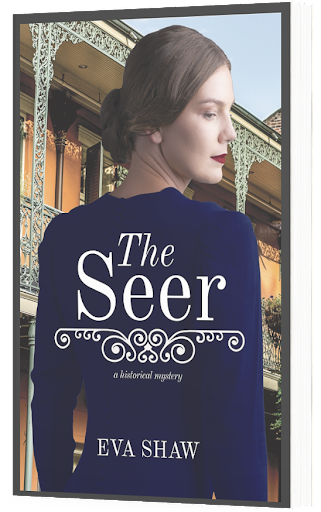 San Diego, CA – The award-winning author of over 100 books returns with a high-speed new mystery exploring New Orleans’ history of deception and domestic terrorism during World War II. Introducing: Eva Shaw and The Seer (Torch Flame, September 14, 2021).
San Diego, CA – The award-winning author of over 100 books returns with a high-speed new mystery exploring New Orleans’ history of deception and domestic terrorism during World War II. Introducing: Eva Shaw and The Seer (Torch Flame, September 14, 2021).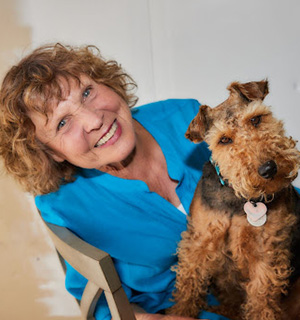 EVA SHAW is one of the country’s premier ghostwriters and is the author of more than award-winning 100 books. Novels with her byline include these faith-based Amazon best sellers: Doubts of the Heart and Games of the Heart. Nonfiction best sellers include: Ghostwriting: The Complete Guide, Writeriffic 2: Creativity Training for Writers, Write Your Book in 20 Minutes, Garden Therapy: Nature’s Health Plan, and What to Do When A Loved One Dies. Visit Amazon, Good Reads and other sellers for reviews.
EVA SHAW is one of the country’s premier ghostwriters and is the author of more than award-winning 100 books. Novels with her byline include these faith-based Amazon best sellers: Doubts of the Heart and Games of the Heart. Nonfiction best sellers include: Ghostwriting: The Complete Guide, Writeriffic 2: Creativity Training for Writers, Write Your Book in 20 Minutes, Garden Therapy: Nature’s Health Plan, and What to Do When A Loved One Dies. Visit Amazon, Good Reads and other sellers for reviews.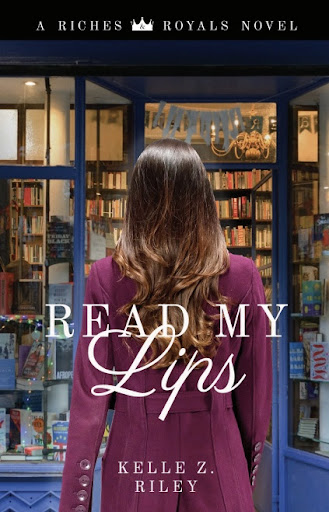 Chattanooga, TN – “Good cocoa is like good lovemaking. It’s best when it’s hot, sweet, and a little spicy.” Kelle Z. Riley (Undercover Cat series) channels humor and emotion in one luxurious dessert. Read My Lips (Sept. 7, 2021) is a lush romance gripped with desire from the very first page.
Chattanooga, TN – “Good cocoa is like good lovemaking. It’s best when it’s hot, sweet, and a little spicy.” Kelle Z. Riley (Undercover Cat series) channels humor and emotion in one luxurious dessert. Read My Lips (Sept. 7, 2021) is a lush romance gripped with desire from the very first page.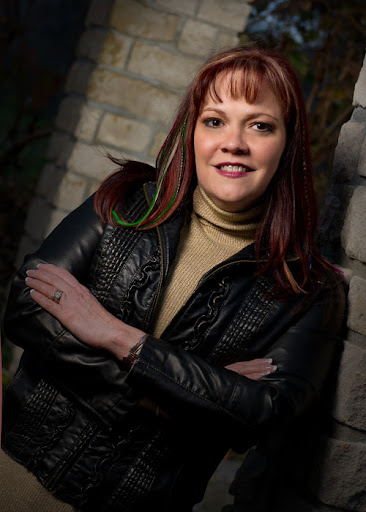 Kelle Z. Riley: Writer, speaker, global traveler, Ph.D. chemist, and safety/martial arts expert, Kelle Z. Riley has been featured in public forums that range from local newspapers to national television.
Kelle Z. Riley: Writer, speaker, global traveler, Ph.D. chemist, and safety/martial arts expert, Kelle Z. Riley has been featured in public forums that range from local newspapers to national television. Waterloo, ONTARIO – For thousands of years, legends of the Grim Reaper have terrified children around the world. But what if, instead of an ominous cloaked figure, Death is simply a tired wolf in search of relief?
Waterloo, ONTARIO – For thousands of years, legends of the Grim Reaper have terrified children around the world. But what if, instead of an ominous cloaked figure, Death is simply a tired wolf in search of relief?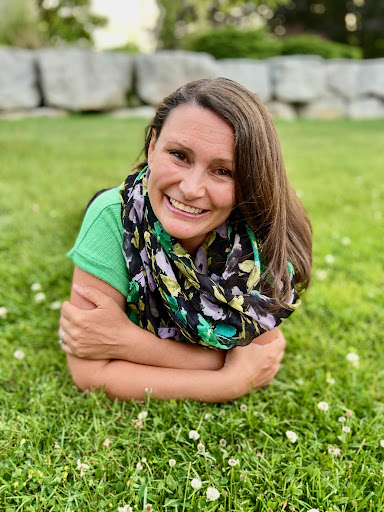 JESSICA VITALIS is a Columbia MBA-wielding writer. After leaving home at 16, Vitalis explored several careers before turning her talents to middle grade literature. She brings her experience growing up in a non-traditional childhood to her stories, exploring themes such as death and grief, domestic violence, and socio-economic disparities. With a mission to write entertaining and thought-provoking literature, she often includes magic and fantastical settings. As an active volunteer in the kidlit community, she’s also passionate about using her privilege to lift up other voices. In addition to volunteering with We Need Diverse Books and Pitch Wars, she founded Magic in the Middle, a series of free monthly recorded book talks, to help educators introduce young readers to new stories. She was recently named a 2021 Canada Council of the Arts Grant Recipient. An American expat, she now lives in Canada with her husband and two precocious daughters. She loves traveling, sailing and scuba diving, but when she’s at home, she can usually be found reading a book or changing the batteries in her heated socks.
JESSICA VITALIS is a Columbia MBA-wielding writer. After leaving home at 16, Vitalis explored several careers before turning her talents to middle grade literature. She brings her experience growing up in a non-traditional childhood to her stories, exploring themes such as death and grief, domestic violence, and socio-economic disparities. With a mission to write entertaining and thought-provoking literature, she often includes magic and fantastical settings. As an active volunteer in the kidlit community, she’s also passionate about using her privilege to lift up other voices. In addition to volunteering with We Need Diverse Books and Pitch Wars, she founded Magic in the Middle, a series of free monthly recorded book talks, to help educators introduce young readers to new stories. She was recently named a 2021 Canada Council of the Arts Grant Recipient. An American expat, she now lives in Canada with her husband and two precocious daughters. She loves traveling, sailing and scuba diving, but when she’s at home, she can usually be found reading a book or changing the batteries in her heated socks.
